As a textile manufacturer,
what we have changed and what we have not.
TOYO ORIMONO started with 20 weaving looms in 1917 during the first World War.
In the more than one hundred years since, we have developed steadily even during turbulent times.
The keys to our success are no more than always striving to keep up with new trends and being ready for change.
Many things have changed since our inception and currently we have closed our own factories
in Japan in favor of "fabless" manufacturing overseas.
However, the value we offer as a textile manufacturer remains unchanged
: supplying products that satisfy customers' demands of time, cost and quality.
To accomplish this, we have built up a comprehensive business model
that includes dispatching Japanese technicians to supervise overseas factories, training local staff,
and providing in-depth technical support to our partners.
We will continuously adapt our ways of business and accommodate new development
in order to remain a company that offers value to our customers and society.
Not clinging to the past but looking forward to the future.
TOYO ORIMONO is always ready to take on new challenges and new possibilities.
"KOSHIZAWA KIGYOJO" was founded.
Began production of silk fabrics for kimonos with 20 shuttle looms.
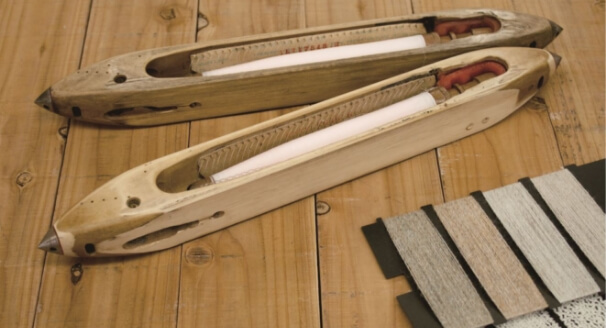
Construction of head office factory.
In order to satisfy increasing production scale, another factory was built at the location that became later head office.
Production of rayon fabrics began in addition to silk.
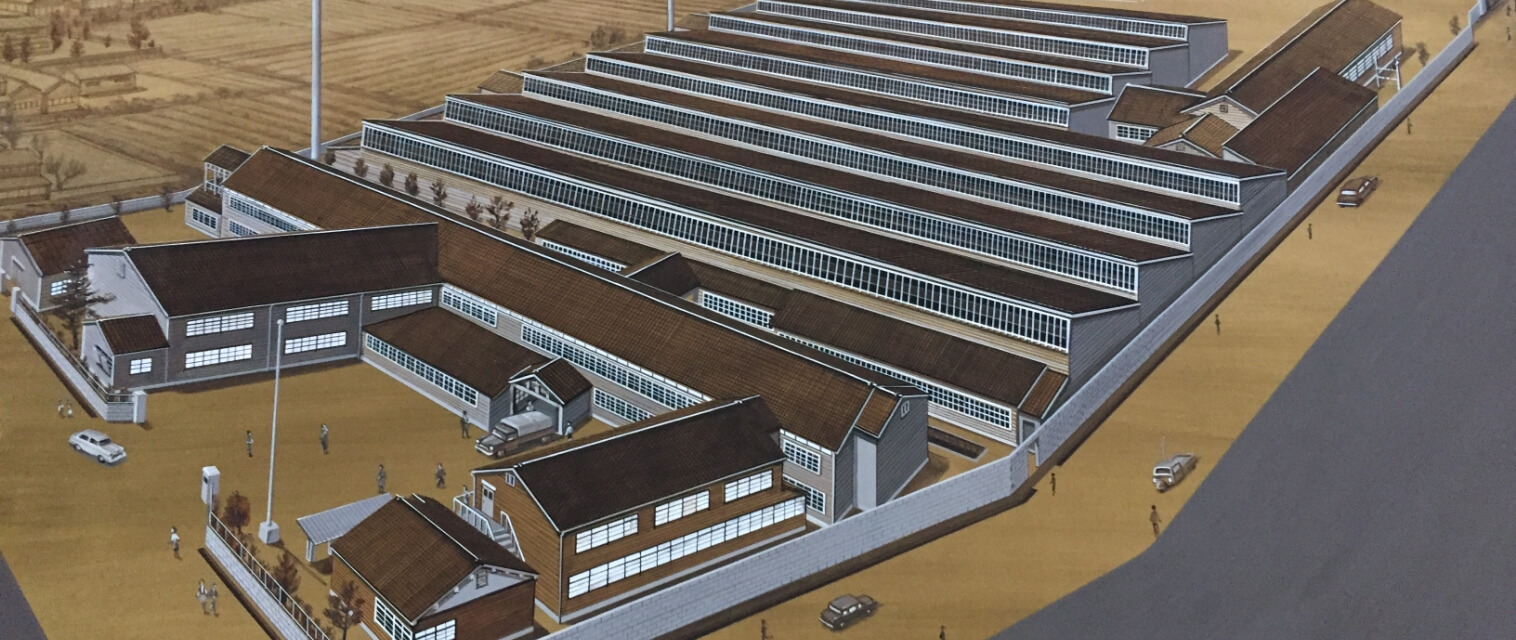
Established TOYO ORIMONO CO.,LTD.
Uchinada Plant constructed
Second plant constructed to expand production of nylon fabric. (-1980 Closed)
Development and production of versatile fabrics with an integrated production system for yarn texturizing, warping, and weaving.
In 1990, while repeatedly replacing equipment, the company established an integrated production system, with its own plants for yarn texturizing (false-twist texturizing and twisting), warping, and weaving.
The company had up to 80 water jet looms and 13 rapier looms, and produced fabrics for women's apparel, kimonos, functional materials, and curtains.

In 1986, a research and development center was established and has been actively developing yarns and fabrics since.
View of the factory as shown in Toyo's then-pamphlet, circa 1990s
Technical guidance towards a factory in Indonesia.
Started transferring production technologies and techniques developed at the head office factory to the factory in Indonesia. Later, it became the foothold for the company's subsequent overseas expansion.
Held a dinner party at the factory during Ramadan.
The company believes understanding the culture and customs of a foreign country is an important aspect of manufacturing overseas.
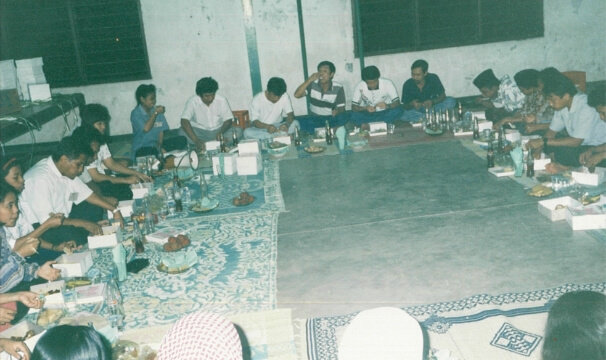
Held a dinner party at the factory during Ramadan.
The company believes understanding the culture and customs of a foreign country is an important aspect of manufacturing overseas.
Began in-house development of woven blackout curtain fabrics.
Began in-house development of innovative woven blackout curtain fabrics and promoted self-distribution.
Closing domestic factories and shifting to overseas "fabless" production.
In light of changes in the business environment, including the rise of fabrics made in China and other countries, as well as downsizing of domestic contract manufacturers, the company closed its domestic factories and shifted to overseas "fabless" production.
Established curtain design and trade company "TEXTILE DEPO CO.,LTD"
Commenced consignment production (weaving) in Vietnam
Our Japanese weaving engineers started working as expatriates in a partner factory in Vietnam and supervised production of woven blackout curtains for the Japanese market. Our technicians provide support and conduct quality control at the same time.
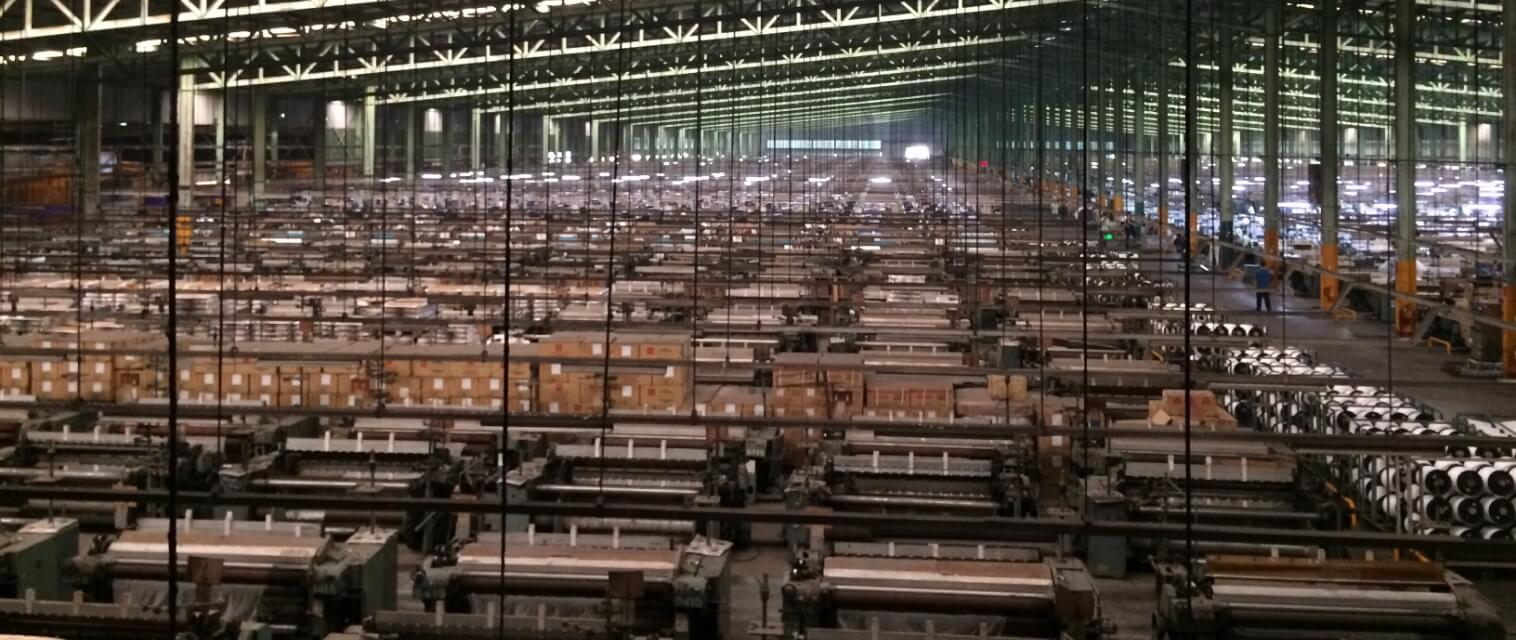
A view of said factory, which is currently still producing curtain fabrics. Some of the looms are used exclusively for TOYO ORIMONO.
Commenced consignment production (dyeing) in Vietnam.
Commenced consignment production (weaving and dyeing) in Indonesia
Following the production of greige fabrics, the Japanese dyeing technicians also moved to Vietnam and were stationed at the factory to begin dyeing fabrics for curtains, sportswear, working-uniforms and other clothing.
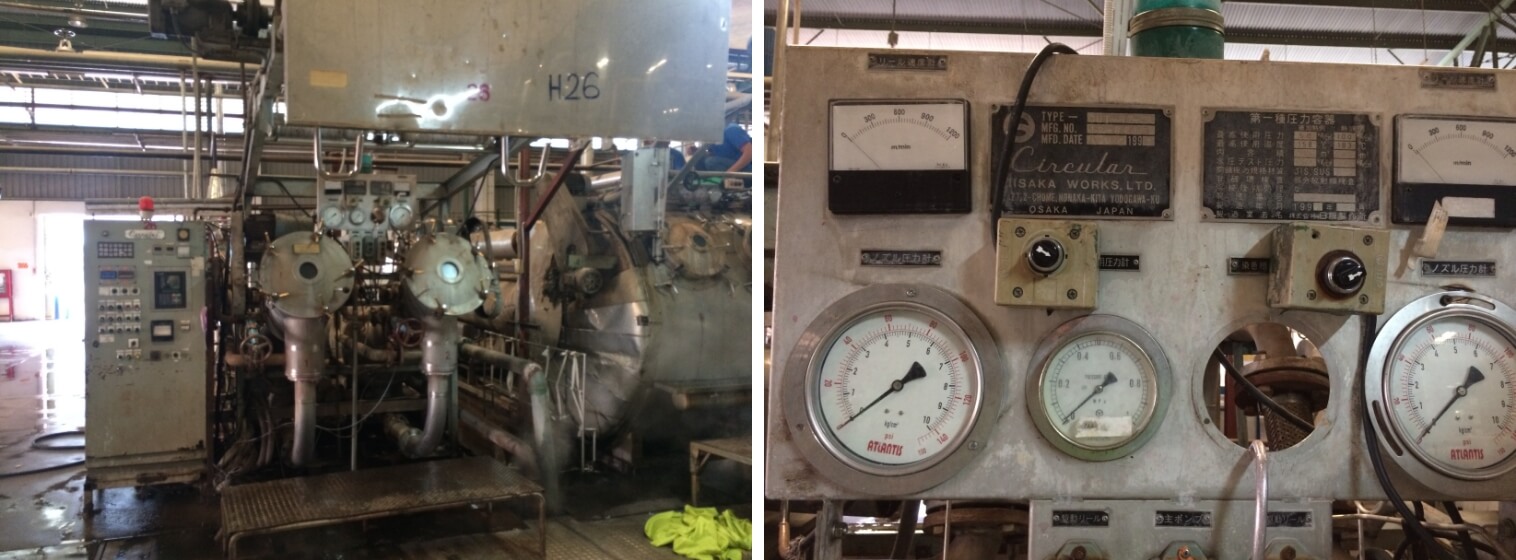
A dyeing machine was sent from Japan to a factory in Vietnam to test dyeing at the factory.
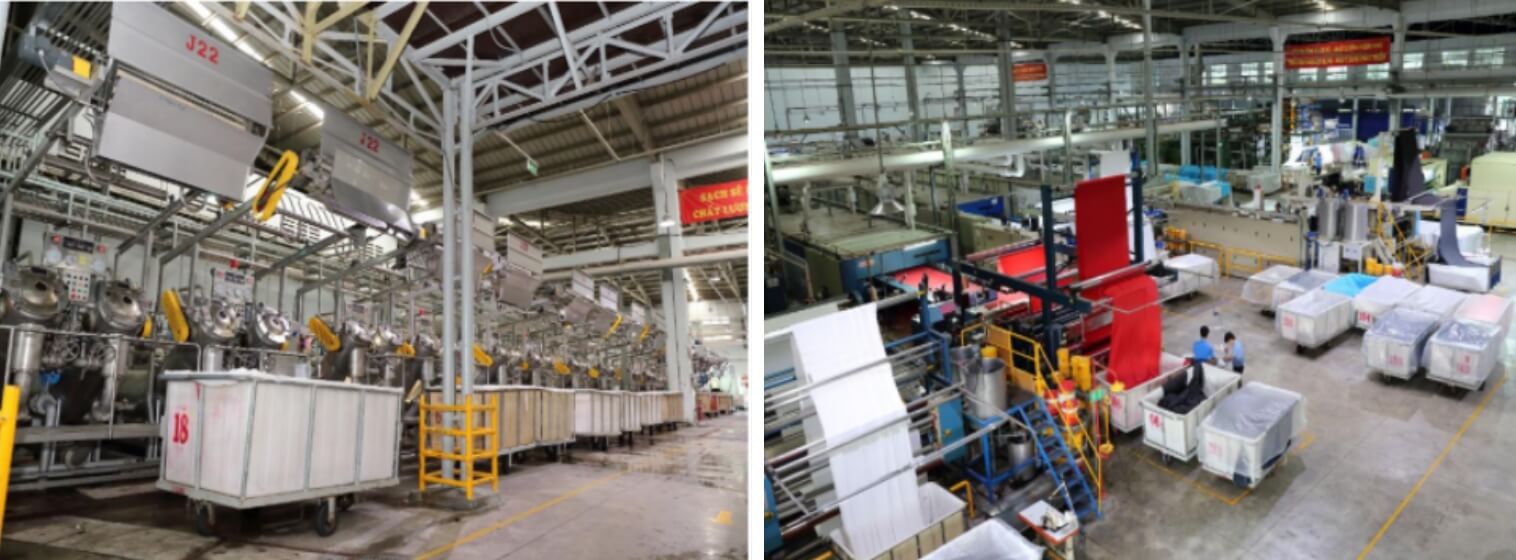
A scene at a partner factory for fabrics for clothing applications
Commenced consignment production (weaving) in China
In order to utilize Chinese greige fabrics and supply chains, as well as meeting customer's demand for fabric procurement, production started of greige fabrics in China.
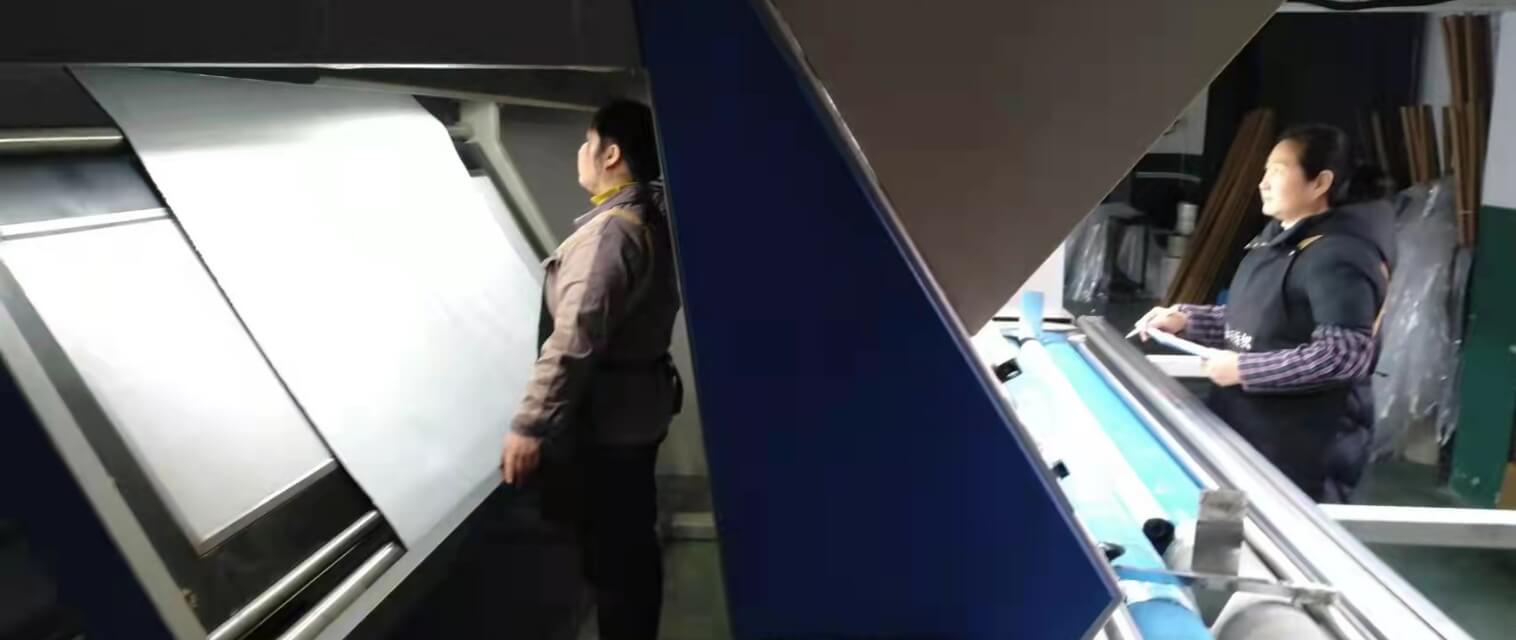
In order to produce greige fabrics of Japanese quality, inspection machines were installed at the factory that can inspect both sides of the fabric.
Commenced production of polyester cotton (T/C) in Vietnam
Production of cotton blended fabrics by AJL started in Vietnam.
A quality control meeting was held at AJL weaving factory. The Vietnamese employees and Japanese technicians discussed improving quality of products.
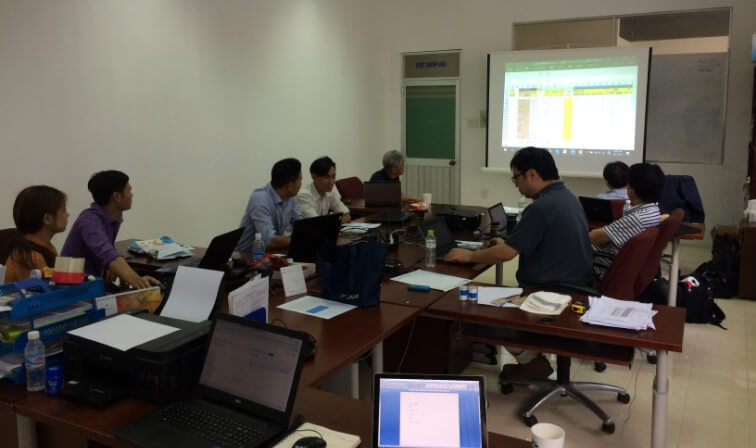
Production of cotton blended fabrics by AJL started in Vietnam.
A quality control meeting was held at AJL weaving factory. The Vietnamese employees and Japanese technicians discussed improving quality of products.
Establishing a local subsidiary in Vietnam
To expand fabric sales in Vietnam, a local subsidiary was established.
Started domestic sales of curtain fabrics in Vietnam.



